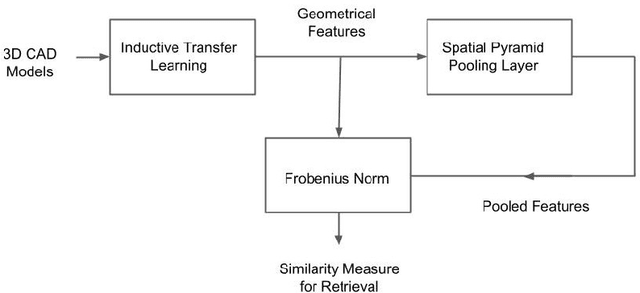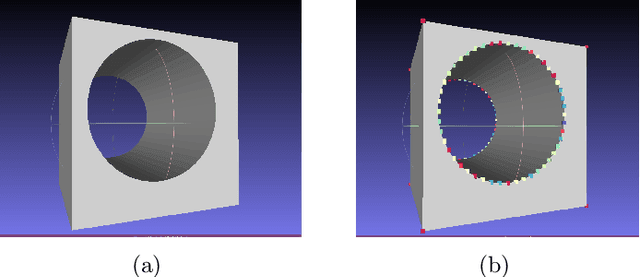Sowmya V
Efficient Feature Extraction Using Light-Weight CNN Attention-Based Deep Learning Architectures for Ultrasound Fetal Plane Classification
Oct 22, 2024Abstract:Ultrasound fetal imaging is beneficial to support prenatal development because it is affordable and non-intrusive. Nevertheless, fetal plane classification (FPC) remains challenging and time-consuming for obstetricians since it depends on nuanced clinical aspects, which increases the difficulty in identifying relevant features of the fetal anatomy. Thus, to assist with its accurate feature extraction, a lightweight artificial intelligence architecture leveraging convolutional neural networks and attention mechanisms is proposed to classify the largest benchmark ultrasound dataset. The approach fine-tunes from lightweight EfficientNet feature extraction backbones pre-trained on the ImageNet1k. to classify key fetal planes such as the brain, femur, thorax, cervix, and abdomen. Our methodology incorporates the attention mechanism to refine features and 3-layer perceptrons for classification, achieving superior performance with the highest Top-1 accuracy of 96.25%, Top-2 accuracy of 99.80% and F1-Score of 0.9576. Importantly, the model has 40x fewer trainable parameters than existing benchmark ensemble or transformer pipelines, facilitating easy deployment on edge devices to help clinical practitioners with real-time FPC. The findings are also interpreted using GradCAM to carry out clinical correlation to aid doctors with diagnostics and improve treatment plans for expectant mothers.
Unleashing the Power of Dynamic Mode Decomposition and Deep Learning for Rainfall Prediction in North-East India
Sep 17, 2023Abstract:Accurate rainfall forecasting is crucial for effective disaster preparedness and mitigation in the North-East region of India, which is prone to extreme weather events such as floods and landslides. In this study, we investigated the use of two data-driven methods, Dynamic Mode Decomposition (DMD) and Long Short-Term Memory (LSTM), for rainfall forecasting using daily rainfall data collected from India Meteorological Department in northeast region over a period of 118 years. We conducted a comparative analysis of these methods to determine their relative effectiveness in predicting rainfall patterns. Using historical rainfall data from multiple weather stations, we trained and validated our models to forecast future rainfall patterns. Our results indicate that both DMD and LSTM are effective in forecasting rainfall, with LSTM outperforming DMD in terms of accuracy, revealing that LSTM has the ability to capture complex nonlinear relationships in the data, making it a powerful tool for rainfall forecasting. Our findings suggest that data-driven methods such as DMD and deep learning approaches like LSTM can significantly improve rainfall forecasting accuracy in the North-East region of India, helping to mitigate the impact of extreme weather events and enhance the region's resilience to climate change.
Learning (With) Distributed Optimization
Aug 10, 2023Abstract:This paper provides an overview of the historical progression of distributed optimization techniques, tracing their development from early duality-based methods pioneered by Dantzig, Wolfe, and Benders in the 1960s to the emergence of the Augmented Lagrangian Alternating Direction Inexact Newton (ALADIN) algorithm. The initial focus on Lagrangian relaxation for convex problems and decomposition strategies led to the refinement of methods like the Alternating Direction Method of Multipliers (ADMM). The resurgence of interest in distributed optimization in the late 2000s, particularly in machine learning and imaging, demonstrated ADMM's practical efficacy and its unifying potential. This overview also highlights the emergence of the proximal center method and its applications in diverse domains. Furthermore, the paper underscores the distinctive features of ALADIN, which offers convergence guarantees for non-convex scenarios without introducing auxiliary variables, differentiating it from traditional augmentation techniques. In essence, this work encapsulates the historical trajectory of distributed optimization and underscores the promising prospects of ALADIN in addressing non-convex optimization challenges.
Geometry Based Machining Feature Retrieval with Inductive Transfer Learning
Aug 26, 2021



Abstract:Manufacturing industries have widely adopted the reuse of machine parts as a method to reduce costs and as a sustainable manufacturing practice. Identification of reusable features from the design of the parts and finding their similar features from the database is an important part of this process. In this project, with the help of fully convolutional geometric features, we are able to extract and learn the high level semantic features from CAD models with inductive transfer learning. The extracted features are then compared with that of other CAD models from the database using Frobenius norm and identical features are retrieved. Later we passed the extracted features to a deep convolutional neural network with a spatial pyramid pooling layer and the performance of the feature retrieval increased significantly. It was evident from the results that the model could effectively capture the geometrical elements from machining features.
Prediction of number of cases expected and estimation of the final size of coronavirus epidemic in India using the logistic model and genetic algorithm
Mar 26, 2020



Abstract:In this paper, we have applied the logistic growth regression model and genetic algorithm to predict the number of coronavirus infected cases that can be expected in upcoming days in India and also estimated the final size and its peak time of the coronavirus epidemic in India.
Randomized ICA and LDA Dimensionality Reduction Methods for Hyperspectral Image Classification
Apr 19, 2018



Abstract:Dimensionality reduction is an important step in processing the hyperspectral images (HSI) to overcome the curse of dimensionality problem. Linear dimensionality reduction methods such as Independent component analysis (ICA) and Linear discriminant analysis (LDA) are commonly employed to reduce the dimensionality of HSI. These methods fail to capture non-linear dependency in the HSI data, as data lies in the nonlinear manifold. To handle this, nonlinear transformation techniques based on kernel methods were introduced for dimensionality reduction of HSI. However, the kernel methods involve cubic computational complexity while computing the kernel matrix, and thus its potential cannot be explored when the number of pixels (samples) are large. In literature a fewer number of pixels are randomly selected to partial to overcome this issue, however this sub-optimal strategy might neglect important information in the HSI. In this paper, we propose randomized solutions to the ICA and LDA dimensionality reduction methods using Random Fourier features, and we label them as RFFICA and RFFLDA. Our proposed method overcomes the scalability issue and to handle the non-linearities present in the data more efficiently. Experiments conducted with two real-world hyperspectral datasets demonstrates that our proposed randomized methods outperform the conventional kernel ICA and kernel LDA in terms overall, per-class accuracies and computational time.
 Add to Chrome
Add to Chrome Add to Firefox
Add to Firefox Add to Edge
Add to Edge